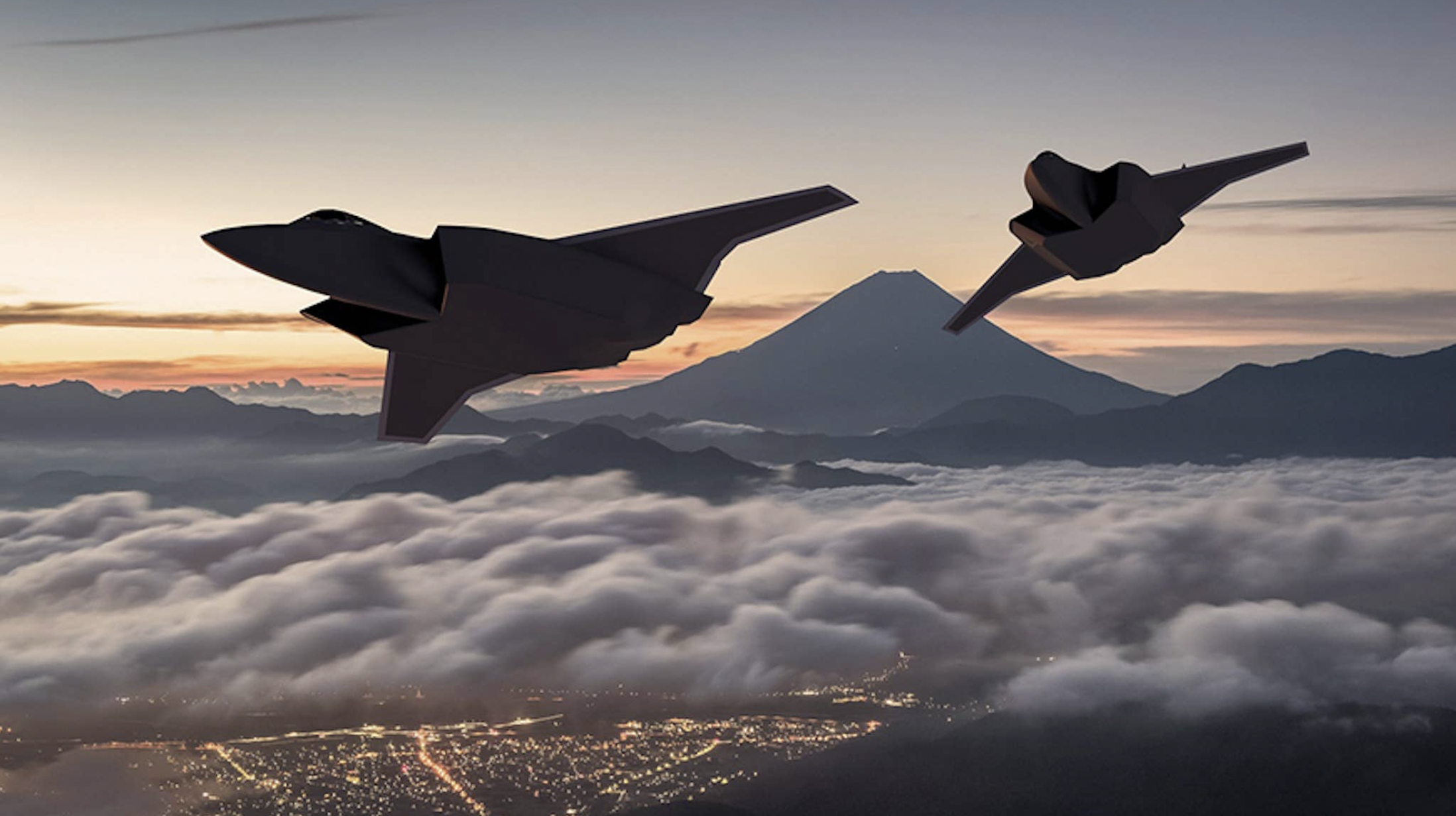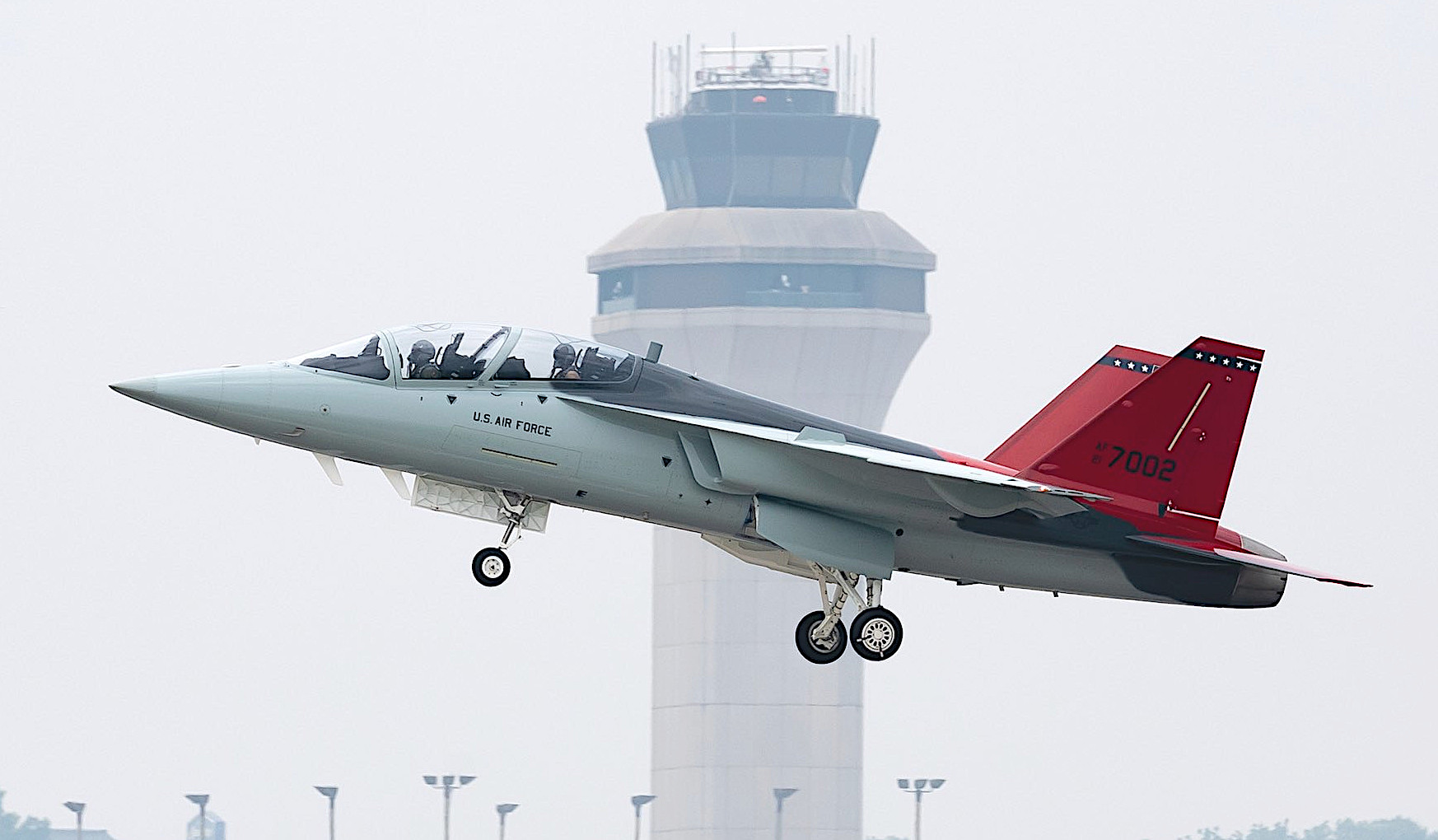Recent reports from Tokyo suggest that Japan is looking to acquire the Boeing/Saab T-7A Red Hawk, or a derivative of it, as its next-generation jet trainer. Indications are that the Japan Air Self-Defense Force (JASDF) wants the successor to its current Kawasaki T-4 to be the same platform as used by the U.S. Air Force, to enhance commonality and cut costs compared with building a new trainer on its own.
According to a recent report in the Mainichi Shimbun newspaper, the Japanese and U.S. governments are already “coordinating to jointly develop a successor to the Japan Air Self-Defense Force’s T-4 trainer.” As part of the program, the source states that Japanese Prime Minister Fumio Kishida will soon visit the United States, where a related agreement will be signed. Prime Minister Kishida is scheduled to make a state visit to Washington on April 10.

While Japan and the United States have never collaborated in this way on a training aircraft, the aim is to both reduce production costs as well as strengthen cooperation between the armed forces of the two countries, already very close military allies.
The report suggests joint development of the JASDF’s new trainer, although the aspiration toward aircraft commonality seems to indicate that the T-7, or derivative, is the only realistic choice. Development of this aircraft is already at a fairly advanced stage.

The T-7 program has been much delayed, but the first pre-production engineering and manufacturing development (EMD) example arrived at Edwards Air Force Base, California, to begin developmental flight testing, last November. The U.S. Air Force plans to buy 351 of the jet trainers, to replace its aging T-38 Talons. Boeing has also pitched a version of the T-7 to the U.S. Navy, to replace its T-45C Goshawks, as well.
There has been some previous international interest in the T-7, particularly from Australia, although delays in the program led the Royal Australian Air Force to push back its own plans to replace its existing BAE Hawk jet trainers. Serbia has also been suggested as a potential Red Hawk customer, likely for a light fighter derivative, the so-called F-7, that remains in the conceptual phase.
Asked about the content of the report, a Boeing spokesperson told The War Zone: “Boeing has a long history of supporting Japan’s strategic needs and remains committed to working with the government of Japan as its defense requirements develop.”
The JASDF needs to replace its T-4 advanced jet trainers, the first of which took to the air in prototype form in 1985. The aircraft entered service in 1988 and a total of 212 were built, of which more than 180 are reported to remain in use today, although the airworthiness of the fleet has suffered in recent years due to an engine issue uncovered in 2019. As well as serving with training units and for liaison and test work, the T-4 is also the mount of the JASDF’s Blue Impulse aerobatic demonstration team, seen in the video below.

The T-4 has high-subsonic performance and is sometimes classed as an intermediate trainer, since it was developed to replace the subsonic Lockheed T-33 and Fuji T-1, as well as to take on some of the syllabus that previously used the supersonic Mitsubishi T-2.
Today, the T-4 is showing its age and it’s considered unsuitable for training the next generations of JASDF combat pilots, many of whom will go on to serve in the F-35 stealth fighter and, ultimately, the sixth-generation combat aircraft being developed together with the United Kingdom and Japan under the GCAP program.

Currently, the JASDF also relies heavily on two-seat versions of its Mitsubishi F-2 and F-15J combat jets to provide advanced and operational training. The T-7, among other advanced jet trainers, would provide a surrogate aircraft onto which a lot of this tactical training could be ‘downloaded’ as a cheaper alternative.

Collaborating with the United States on the T-7 could bring other benefits, too. Tapping into a program that already has a production line should not only help bring down costs but also ensure that there is a reliable flow of spare parts and provide access to maintenance hubs. The supply of spare parts to support T-4, production of which ended years ago, and which was never exported, has not always been reliable.
As fears over a future confrontation with China grow, Japan is increasingly looking to make its supply chains for defense equipment more resilient, something that was enshrined in the meeting of the Japan-U.S. Economic Policy Consultative Committee last November.
Japan is reportedly also hopeful that deeper collaboration with the United States on its next jet trainer should help it develop critical new technologies including in the realm of artificial intelligence (AI). While AI is playing an increasingly important role in aircrew training, Japan apparently also seeks to harness this technology to help it develop future uncrewed aircraft that are expected to operate alongside the GCAP. Last December, Japan and the United States signed an agreement to conduct joint research on AI for use in drones.
Previous Japanese combat drone experiments included the Fuji TACOM, used to test and evaluate technologies for an air-launched uncrewed aerial vehicle:
At this stage, there is no indication that Japan would assemble the T-7 locally, as it has done with the F-35. Instead, it seems the priority is to leverage the efficiency of mass production of the Red Hawk and the cost savings that should bring. However, it’s conceivable that Japanese industry could well play a part in the wider T-7 production effort, too.
For the T-7, a Japanese order, or wider involvement in the program, could be a boon, especially as the program has suffered well-publicized technical and other issues.
The U.S. Air Force’s 2025 budget proposal halves the planned purchase of T-7s to seven, at a cost of $235 million. While that decision has been partly driven by budget constraints, it also points to uncertainty about the aircraft as development delays persist.

Andrew Hunter, the assistant secretary of the Air Force for acquisition, technology and logistics, has said that a planned Milestone C production decision in February 2025 might not now happen. Previously, it had been hoped that low-rate initial production would begin in December 2023.
The budget documents project the completion of developmental test and evaluation in May 2025, the start of initial operational test and evaluation in January 2026, and the first low-rate initial production deliveries in April 2026.
The U.S. Air Force now doesn’t expect to reach initial operational capability (IOC) with the T-7 until 2028. This is a further slip compared to the previous prediction — 2027 at the earliest — and four years later than originally expected.
Meanwhile, Boeing has reported $1.3 billion in losses on the T-7, after underbidding in the original T-X competition and then being hit with charges for delays.
Japan buying into the program — which would likely lead to a large-scale order — would be a considerable vote of confidence in the aircraft.
Contact the author: thomas@thewarzone.com
